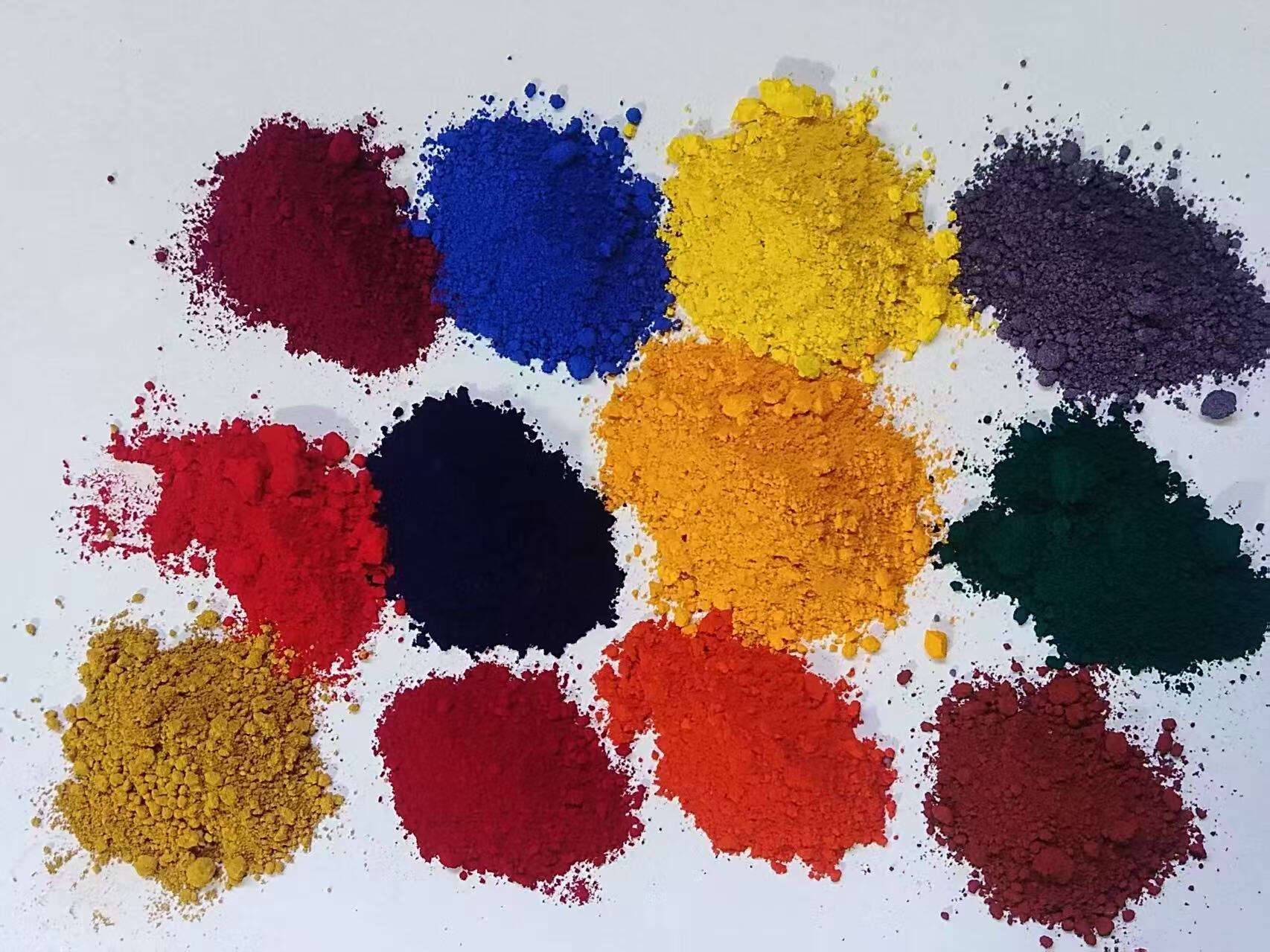Փոշու լիցքավորման որակի վերահսկման տիրապետում արդյունաբերական կիրառություններում
Ցանկացած արդյունաբերական վերջապատման գործընթացի հաջողությունը կախված է անթերի արդյունքների ստացումից էլեկտրոստատիկ գույնավոր փուշ կիրառումների դեպքում։ Երբ փոշու լիցքով ծածկված մակերեսների վրա հայտնվում են թերություններ, դրանք կարող են վնասել ինչպես էսթետիկական տեսքը, այնպես էլ ֆունկցիոնալ պաշտպանությունը։ Այս խնդիրների նույնականացման, կանխարգելման և ուղղման ձևերը հասկանալը կարևոր է արտադրության արդյունավետությունը և արտադրանքի որակի ստանդարտները պահպանելու համար:
Տարբեր ոլորտների արտադրության մասնագետները փոշու լցման վրա հիմնվում են դրա տևողականության, ծախսերի արդյունավետության և էկոլոգիական առավելությունների շնորհիվ: Այնուամենայնիվ, նույնիսկ փոքր տատանումները կիրառման պարամետրերում կամ շրջակա միջավայրի պայմաններում կարող են հանգեցնել էլեկտրաստատիկ լցման փոշու սխալների, որոնք պահանջում են անմիջական ուշադրություն և ուղղում:
Երևույթի հաճախ հանդիպող խնդիրներ
Նարնջի կեղևի նման երևույթ և երանգի տարբերություններ
Էլեկտրաստատիկ լցման փոշու ամենահաճախ հանդիպող սխալներից մեկը նարնջի կեղևի նման երևույթն է, որը բնութագրվում է փոքր փոսիկներով մակերեսով՝ հիշեցնելով ցիտրուսային մրգերի կեղևը: Այս տեքստուրայի անսաղմնալիությունը սովորաբար առաջանում է կիրառման հեռավորության անհամապատասխանության, սխալ ջերմաստիճանային կարգավորումների կամ անհարմար փոշու մասնիկների չափի բաշխման պատճառով: Ներկման ապարատի և մասի միջև հեռավորության հաստատունությունը պահպանելը և ցոլման ջերմաստիճանների օպտիմալացումը կարող է զգալիորեն նվազեցնել այս տեքստուրայի անomalies-ները:
Ձևավորման հարթ մակերեսի հասնելու համար կարևոր նշանակություն ունեն առաջադեմ կիրառման տեխնիկան և փոշու ճիշտ ընտրությունը: Ժամանակակից ծածկույթային համակարգերը հաճախ ներառում են մասնիկների չափի վերահսկում և հոսողականությունը բարելավող ավելացուցիչներ, որոնք օգնում են նվազագույնի հասցնել նարնջի կեղևի էֆեկտը՝ պահպանելով ցանկալի ծածկույթի հատկանիշները:
Թաղանթի հաստության անհամաչափություն
Անհավասար ծածկույթի հաստությունը փոշային ներկման գործընթացներում մեկ այլ կարևոր մարտահրավեր է: Բարակ կամ չափազանց հաստ ծածկույթով տեղամասերը կարող են վատ ազդել ինչպես տեսքի, այնպես էլ պաշտպանության վրա: Այս էլեկտրաստատիկ ներկման փոշու սխալները հաճախ առաջանում են անհամապատասխան այրի կարգավորումների, փոշու հոսքի անհամաչափ արագության կամ մասերի անկանոն երկրաչափական ձևերի պատճառով:
Իրականացնելով ավտոմատացված հաստության չափման համակարգեր և սահմանելով ճիշտ այրի շարժման օրինաչափություններ՝ կարող ենք ապահովել համազանգ ծածկույթ: Կիրառման սարքավորումների պարբերական կալիբրումը և շրջակա միջավայրի պայմանների համակարգային հսկումը նույնպես նպաստում են բոլոր մակերեսների վրա համազանգ թաղանթի կառուցումը:

Շրջակա միջավայրին և գործընթացին առնչվող մարտահրավերներ
Խոնավության և տեսանելիության ազդեցությունը
Շրջակա միջավայրի գործոնները կարևոր ազդեցություն են թողնում փոշու լաքապատման որակի վրա։ Բարձր խոնավությունը կարող է առաջացնել էլեկտրաստատիկ լաքապատման փոշու սխալներ, ինչպիսիք են հեղեղները, փոքր անցքերի առաջացումը և վատ կպումը։ Լաքապատման տարածքում կլիմայի ճիշտ վերահսկումը կարևոր է՝ եղանակային պայմաններից անկախ հաստատուն արդյունքներ ստանալու համար։
Խոնավությունը կարգավորող համակարգերի տեղադրումը և շրջակա միջավայրի պայմանների հսկումը օգնում են պահպանել լավագույն լաքապատման պայմաններ։ Ստորակազմի ջերմաստիճանի և խոնավության մակարդակի պարբեշան չափումը թույլ է տալիս կանխատեսել և կանխել խոնավության հետ կապված սխալները։
Ջերմաստիճանի վերահսկում և ցանկապատման խնդիրներ
Լրացման ընթացքում ճշգրիտ ջերմաստիճանի կառավարումը կարևոր է էլեկտրաստատիկ ծածկույթի փոշու թերությունները կանխելու համար: Բավարար չափով ցածր ջերմաստիճաններ կամ անհամաչափ տաքացում կարող է հանգեցնել տարբեր խնդիրների, ներառյալ ամբողջությամբ չլրացված մակերես, գույնի տարբերություններ և կայունության նվազում: Ժամանակակից ինֆրակարմիր ջերմաստիճանի հսկման համակարգերը օգնում են պահպանել ճշգրիտ վերահսկողություն լրացման պրոֆիլների նկատմամբ:
Թուխ վառարանների առաջադեմ կոնստրուկցիայի հնարավորությունները, ինչպիսիք են գոտիների կառավարումը և ջերմաստիճանի քարտեզագրումը, ապահովում են համաչափ ջերմային բաշխում: Լրացման ժամանակացույցների և ջերմաստիճանի հսկման սարքավորումների պարբերական ստուգումը պահպանում է գործընթացի համաձայնեցվածությունը և արտադրանքի որակը:
Սարքավորումների և սպասարկման համար համարվող համարներ
Արկղի արդյունքի օպտիմալացում
Սպրեյի աղբյուրի սպասարկումը և կարգավորումը ուղղակիորեն ազդում է ծածկույթի որակի վրա: Մաշված մասերը կամ սխալ կարգավորումները կարող են հանգեցնել տարբեր էլեկտրոստատիկ փոշու ծածկույթի թերությունների, ներառյալ անհավասար ծածկույթ և չափազանց մեծ սպրեյի ցրում: Աղբյուրի մասերի պարբերական ստուգումն ու սպասարկումը ապահովում է օպտիմալ լիցքավորում և փոշու մատուցման արդյունավետություն:
Զենքի հետ վարվելու ճիշտ տեխնիկայի վերաբերյալ օպերատորներին վերապատրաստելը և համակարգված սպասարկման գրաֆիկների իրականացումը օգնում են կանխել սարքավորումների հետ կապված թերությունները: Տարբեր մասերի կոնֆիգուրացիաների համար օպտիմալ կարգավորումների փաստաթղթավորումը նպաստում է կիրառման հետևողական արդյունքներին:
Փոշու մատուցման համակարգի կառավարում
Փոշու մատուցման համակարգին անհրաժեշտ է զգող վերաբերմունք՝ հոսքի հետ կապված թերությունները կանխելու համար: Փոշու անհամաչափ մատուցումը կարող է առաջացնել թաղանթի հաստության և մակերեսի տեսքի փոփոխություններ: Մատուցման խողովակների, ավազանների և պոմպերի պարբերական մաքրումը պահպանում է հուսալի փոշու տեղափոխում և կիրառում:
Փոշու կառավարման համակարգերի իրականացումը փակ օղակաձև կառավարման հետ օգնում է պահպանել հաստատուն մատակարարման արագությունը: Ֆիլտրերի և ցանցերի ճիշտ ընտրությունն ու սպասարկումը կանխում են էլեկտրոստատիկ լցանյութի աղտոտվածության հետ կապված թերություններ:
Պահանջագարությունների կառավարում և թեստավորման պրոտոկոլներ
Մակերեւույթի պատրաստման ստանդարտներ
Արդյունավետ մակերեւույթի պատրաստումը սահմանում է թերություններ չպարունակող լցման արդյունքների հիմքը: Ոչ բավարար մաքրումը կամ նախնական մշակումը կարող է հանգեցնել կպչունության խախտումների և տարբեր մակերեւույթային թերությունների: Համապարփակ պատրաստման ստանդարտների և ստուգման ընթադարձակարգերի սահմանումը ապահովում է հիմնական նյութի հաստատուն որակ:
Մակերեւույթի մաքրության և նախնական մշակման արդյունավետության պարբերական ստուգումը օգնում է պահպանել բարձր որակի ստանդարտները: Պատրաստման պարամետրերի և արդյունքների փաստաթղթավորումը աջակցում է ընթադարձ գործընթացի բարելավման ջանքերին:
Ստուգման և հաստատման մեթոդներ
Շատ լավ թեստավորման ընթացակարգերի կիրառումը օգնում է նախապես հայտնաբերել էլեկտրոստատիկ փոշու պատվածքի հնարավոր թերությունները, մինչև դրանք ազդեն արտադրության վրա: Կպումը ստուգելը, հաստությունը չափելը և տեսողական ստուգումը ներառող կանոնավոր որակի ստուգումները համարվում են գործընթացի փոփոխությունների վաղ նախազգուշացման համակարգ: Գագաթնակետային թեստային սարքավորումներն ու ստանդարտացված ընթացակարգերը ապահովում են որակի վստահելի գնահատում:
Մանրամասն թեստային ստանդարտների մշակումը և ճիշտ փաստաթղթավորման պահպանումը նպաստում են որակի համակարգին համապատասխանությանը: Թեստային սարքավորումների կանոնավոր կալիբրացիան պահպանում է չափումների ճշգրտությունն ու վստահելիությունը:
Հաճախ տրվող հարցեր
Ինչպե՞ս կարող եմ կանխել նարնջի կեղևի էֆեկտը փոշու պատվածքում:
Նարնջի կեղևի էֆեկտը նվազագույնի հասցնելու համար պահպանեք ճիշտ կիրառման հեռավորությունը, համոզվեք, որ փոշու մասնիկների չափի բաշխումը ճիշտ է, և օպտիմալացրեք ցանցման ջերմաստիճանները: Սարքավորումների կանոնավոր սպասարկումը և ճիշտ փոշու ընտրությունը նույնպես կարևոր դեր են խաղում հարթ վերջավոր մակերեսներ ստանալու համար:
Ինչո՞վ է պայմանավորված փոշու պատվածքի հաստության անհավասարությունը
Անհամաչափ ծածկույթի հաստությունը, որպես կանոն, առաջանում է անվան սխալ կարգավորումների, փոշու անհամաչափ հոսքի արագության կամ մասերի անկանոն երկրաչափական ձևերի պատճառով: Իրականացնելով ավտոմատացված կիրառման համակարգեր և սահմանելով ճիշտ անվան շարժման օրինաչափություններ՝ հնարավոր է հասնել համազանգված ծածկույթի:
Ինչպե՞ս է խոնավությունը ազդում փոշային լաքապատման որակի վրա:
Բարձր խոնավությունը կարող է առաջացնել բազմաթիվ էլեկտրաստատիկ փոշային ծածկույթի թերություններ, ներառյալ պոպուռներ, փոսիկներ և վատ կպում: Ճիշտ կլիմայական վերահսկողությունը և խոնավությունը նվազեցնող համակարգերը օգնում են պահպանել իդեալական կիրառման պայմաններ և խուսափել խոնավության հետ կապված խնդիրներից:
Ինչ դեր է խաղում մակերեսի պատրաստումը ծածկույթի թերությունները կանխարգելելու գործում:
Մակերեսի ճիշտ պատրաստումը կարևոր է կպման ձախողումները և մակերեսային թերությունները կանխարգելելու համար: Սա ներառում է հիմադրանքի մաքրում, համապատասխան նախնական պատրաստում և մակերեսի վիճակի ստուգում լաքապատումից առաջ: Պատրաստման ընթացակարգերի պարբերական փորձարկումն ու փաստաթղթավորումն օգնում է պահպանել որակի ստանդարտները:

